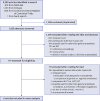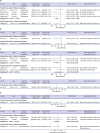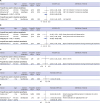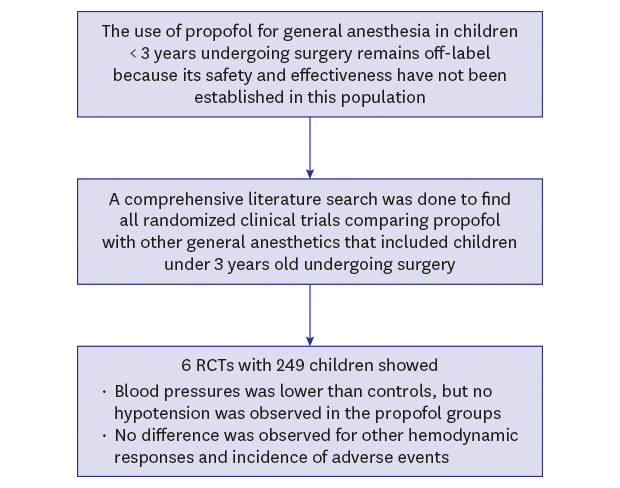2. World Health Organization. WHO Model List of Essential Medicines for Children. 6th ed. Geneva: World Health Organization;2017.
3. British Medical Association. Royal Pharmaceutical Society. Royal College of Paediatrics and Child Health. Neonatal and Paediatric Pharmacists Group. BNF for Children 2011–2012 [Internet]. Accessed 21 Jun, 2017.
www.bnfc.org.
4. Karen T, Schlager GW, Bendix I, Sifringer M, Herrmann R, Pantazis C, et al. Effect of propofol in the immature rat brain on short- and long-term neurodevelopmental outcome. PLoS One. 2013; 8(5):e64480.

5. Salvo I, Landoni G, Mucchetti M, Cabrini L, Pani L. Use and reimbursement of off-label drugs in pediatric anesthesia: the Italian experience. Paediatr Anaesth. 2014; 24(6):625–631.


6. Korea Institute of Drug Safety & Risk Management. Drug Saf Inf. 2013; (52):94–105.
8. Coppini R, Simons SH, Mugelli A, Allegaert K. Clinical research in neonates and infants: challenges and perspectives. Pharmacol Res. 2016; 108:80–87.


9. Smith MC, Williamson J, Yaster M, Boyd GJ, Heitmiller ES. Off-label use of medications in children undergoing sedation and anesthesia. Anesth Analg. 2012; 115(5):1148–1154.


10. Shah PS, Shah VS. Propofol for procedural sedation/anaesthesia in neonates. Cochrane Database Syst Rev. 2011; (3):CD007248.

11. Schrum SF, Hannallah RS, Verghese PM, Welborn LG, Norden JM, Ruttiman U. Comparison of propofol and thiopental for rapid anesthesia induction in infants. Anesth Analg. 1994; 78(3):482–485.


12. Cheng X, Zuo Y, Zhao Q, Gu E, Huang Y. Comparison of the effects of dexmedetomidine and propofol on hemodynamics and oxygen balance in children with complex congenital heart disease undergoing cardiac surgery. Congenit Heart Dis. 2015; 10(3):E123–30.

13. Higgins JP, Green S. Cochrane Handbook for Systematic Reviews of Interventions. Chichester: John Wiley & Sons;2011.
14. Rücker G, Schwarzer G, Carpenter J, Olkin I. Why add anything to nothing? The arcsine difference as a measure of treatment effect in meta-analysis with zero cells. Stat Med. 2009; 28(5):721–738.

15. Higgins JP, Thompson SG. Quantifying heterogeneity in a meta-analysis. Stat Med. 2002; 21(11):1539–1558.


16. Viechtbauer W. Conducting meta-analyses in R with the metafor package. J Stat Softw. 2010; 36(3):1–48.
17. Aun CS, Sung RY, O'Meara ME, Short TG, Oh TE. Cardiovascular effects of i.v. induction in children: comparison between propofol and thiopentone. Br J Anaesth. 1993; 70(6):647–653.


18. Wodey E, Chonow L, Beneux X, Azzis O, Bansard JY, Ecoffey C. Haemodynamic effects of propofol vs thiopental in infants: an echocardiographic study. Br J Anaesth. 1999; 82(4):516–520.


19. Cohen IT, Finkel JC, Hannallah RS, Goodale DB. Clinical and biochemical effects of propofol EDTA vs sevoflurane in healthy infants and young children. Paediatr Anaesth. 2004; 14(2):135–142.

20. Steinmetz J, Holm-Knudsen R, Sørensen MK, Eriksen K, Rasmussen LS. Hemodynamic differences between propofol-remifentanil and sevoflurane anesthesia for repair of cleft lip and palate in infants. Paediatr Anaesth. 2007; 17(1):32–37.


22. Annila P, Viitanen H, Reinikainen P, Baer G, Lindgren L. Induction characteristics of thiopentone/suxamethonium, propofol/alfentanil or halothane alone in children aged 1–3 years. Eur J Anaesthesiol. 1999; 16(6):359–366.


23. Viitanen H, Tarkkila P, Mennander S, Viitanen M, Annila P. Sevoflurane-maintained anesthesia induced with propofol or sevoflurane in small children: induction and recovery characteristics. Can J Anaesth. 1999; 46(1):21–28.


24. Kang P, Jang YE, Kim EH, Lee JH, Kim JT, Kim HS. Safety and efficacy of propofol anesthesia for pediatric target-controlled infusion in children below 3 years of age: a retrospective observational study. Expert Opin Drug Saf. 2018; 17(10):983–989.


25. Kim MS, Lee JH, Han SW, Im YJ, Kang HJ, Lee JR. A randomized comparison of the i-gel with the self-pressurized air-Q intubating laryngeal airway in children. Paediatr Anaesth. 2015; 25(4):405–412.

26. Ghanta S, Abdel-Latif ME, Lui K, Ravindranathan H, Awad J, Oei J. Propofol compared with the morphine, atropine, and suxamethonium regimen as induction agents for neonatal endotracheal intubation: a randomized, controlled trial. Pediatrics. 2007; 119(6):e1248–e1255.

27. Oh TK, Kwon K. Issues in propofol sedation for pediatric patients using target control Infusion (TCI): safety in children 1–3 years old versus children older than 3 years of age. Pediatr Ther. 2016; 6(2):291.









 Citation
Citation Print
Print





 XML Download
XML Download